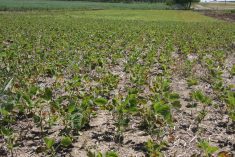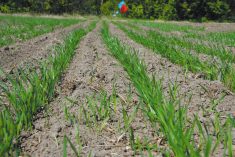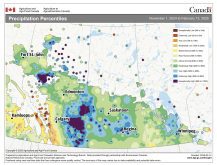High grower margins in most parts of the world expected to be an incentive to increase acreage and focus on higher yields
Global demand for fertilizer products continues to be positive, despite reduced production forecasts in many parts of the world, according Nutrien’s chief economist and head of market research.
Jason Newton said continued uncertainty about the size of U.S. corn and soybean crops, combined with reduced production estimates for Russian wheat, Brazilian corn and all crop types in Western Canada, have provided strong market support for most commodities and will continue to do so for the rest of this year and into 2022.
Over the next month or so, farmers and grain marketers will be paying close attention to actual yield data out of the United States and Canada as harvest progresses, he added.
Read Also

USDA’s August corn yield estimates are bearish
The yield estimates for wheat and soybeans were neutral to bullish, but these were largely a sideshow when compared with corn.
“I think because of the wide distribution of crop production prospects in the U.S., there continues to be quite a bit of uncertainty,” said Newton, when asked about the North American harvest.
“But as we go through the next month and get into harvest, I think actual harvest results will be important to follow.”
Last month, the U.S. Department of Agriculture released updated production forecasts for the U.S. and other countries.
For wheat, the USDA’s Aug. 12 World Agricultural Supply and Demand Estimates (WASDE) report reduced its U.S. wheat production estimate to a shade less than 1.7 billion bushels, down 50 million bu. from its previous estimate.
Projected U.S. ending stocks for wheat were reduced to 627 million bu., about 26 percent lower than a year ago.
The WASDE report also projected global wheat supplies at 1.066 billion U.S. tons — down 16.8 million tons from the previous USDA estimate — based on lower yield expectations in Russia, Canada, and the United States.
WASDE’s Canadian wheat production forecast was lowered 7.5 million tons to 24 million, based on worsening drought conditions across the Prairies.
Other highlights from the Aug. 12 report included:
- A 14.8 billion bu. U.S. corn crop — down 415 million bu. from the USDA’s July forecast — with average American corn yields pegged at 174.6 bu. per acre.
- Lower foreign barley production, based on production problems in Canada, Kazakhstan, Turkey, Europe and Russia.
- A smaller U.S. soybean harvest, now forecast at 4.34 billion bu., down 66 million bu. from the previous USDA estimate.
The WASDE report also called for a 20 million bu. reduction in the U.S. domestic soybean crush and a 20 million bu. reduction in American soybean exports.
Foreign oilseed production was also reduced slightly to 501.4 million tons, based partly on lower canola production estimates for Canada.
The complete WASDE report can be viewed online here.
Initial reaction to the Aug. 12 report supported prices for most major commodities.
Since then, analysts have refocused their attention on other production-related data.
Overall, however, downward supply adjustments combined with strong import demand is expected to provide continued price support.
“Because of these crop production cuts that have taken place, it’s going to be difficult on a global scale to significantly increase ending stocks of the major crops, and if you combine that with strong demand prospects, particularly from China… the outlook looks favourable… through the remainder of 2021 and into 2022,” Newton said.
In the current market environment, global demand for fertilizer products is expected to remain strong, despite drought-related production challenges in some geographies, he added.
Strong prices have prompted larger plantings of soybeans in Brazil. Farmers in Australia are also coming off a productive season amid record or near-record prices for many crops.
“In most geographies globally, grower margins at current crop prices are high and there’s a strong incentive to plant higher acreage, if possible, and to put those crops in a position to produce higher yields,” Newton said.
An early harvest in North America could also lead to a long application window for fall fertilizers, he added.
“We’re expecting… relatively average fall fertilizer demand — assuming the weather co-operates with the fall application season — in the U.S.,” Newton said.
“In Western Canada… it’s potentially more challenging. We know that there’s relatively high fall ammonia application in Western Canada typically. But with the dry moisture conditions that exist, that could be (affected) if soil moisture is not replenished.”
For more content related to drought management visit The Dry Times, where you can find a collection of stories from our family of publications as well as links to external resources to support your decisions through these difficult times.



















